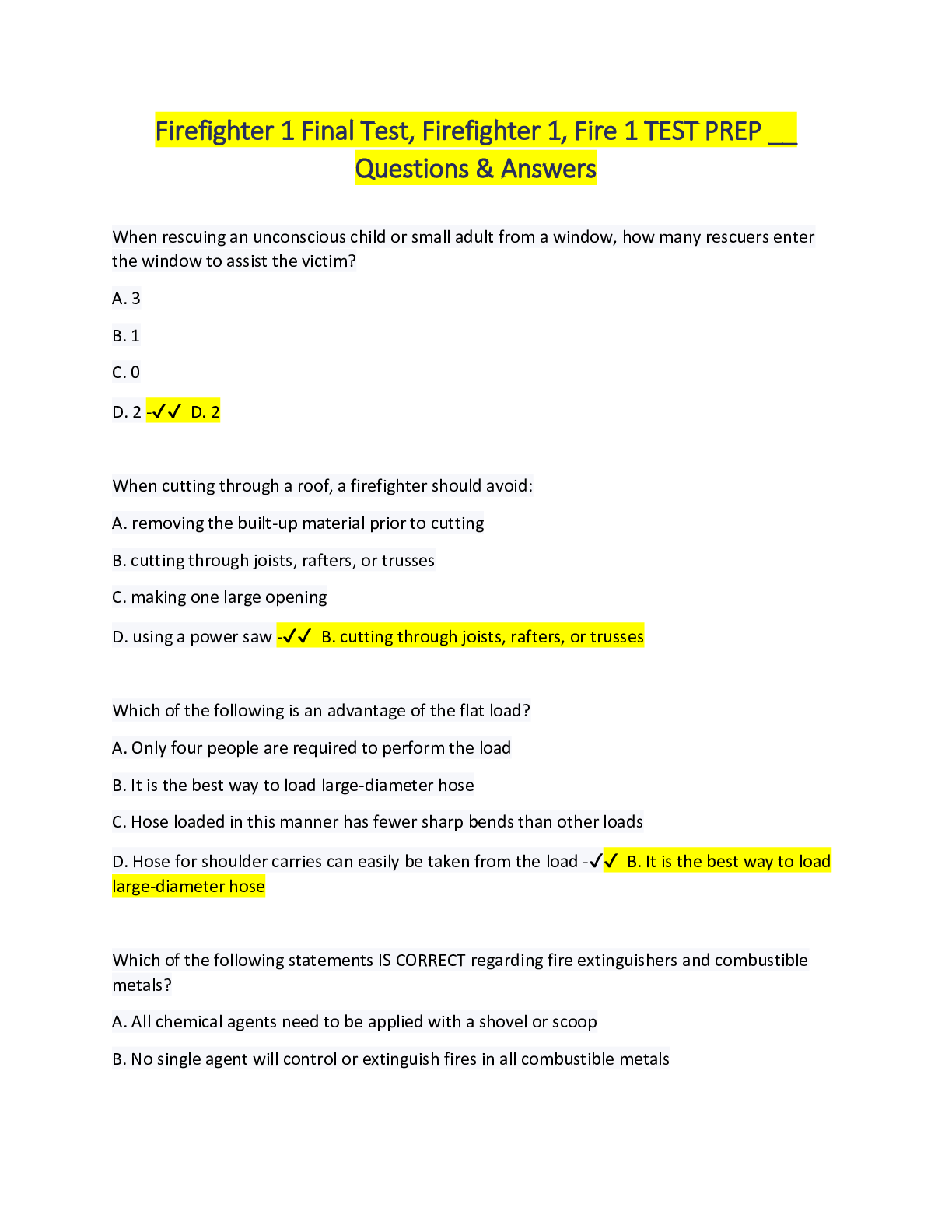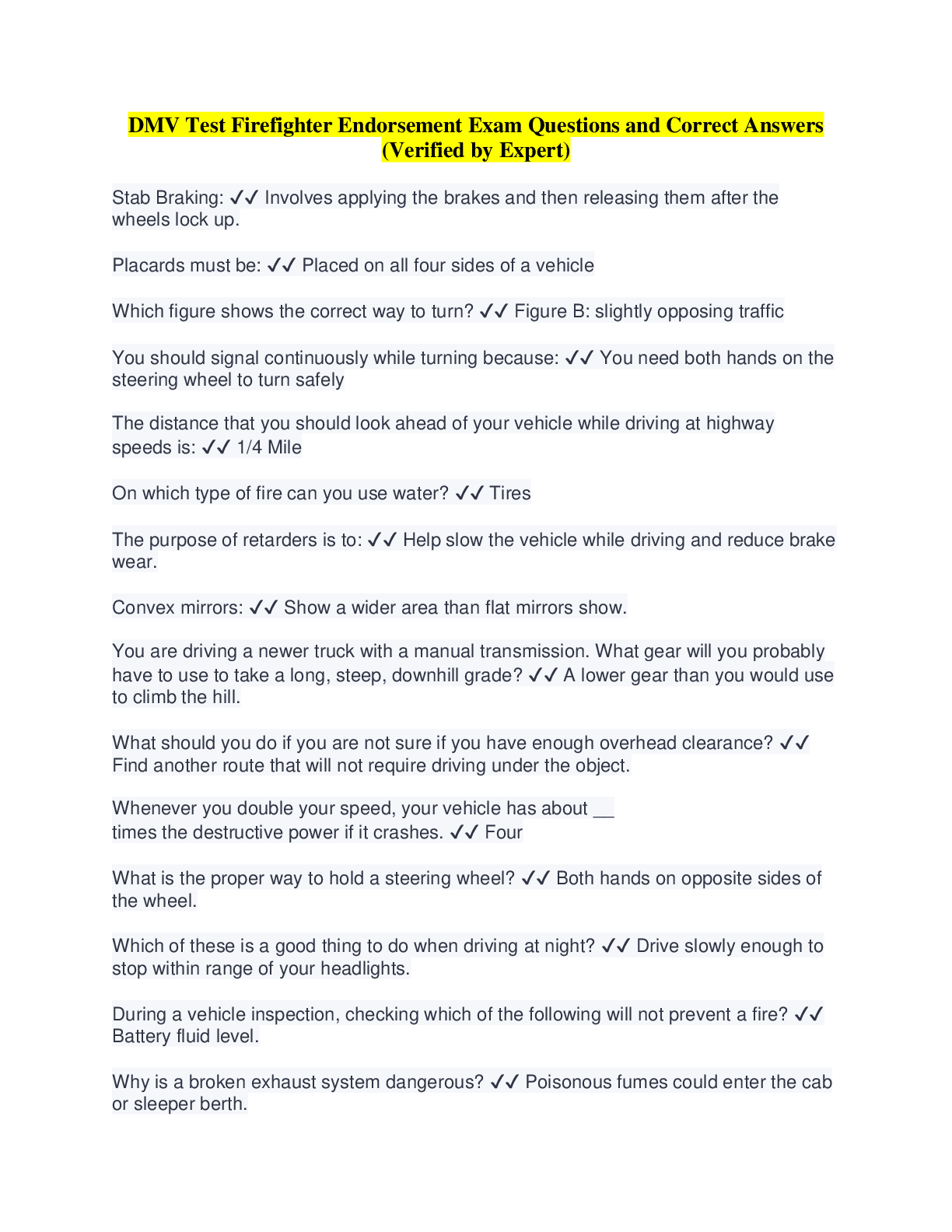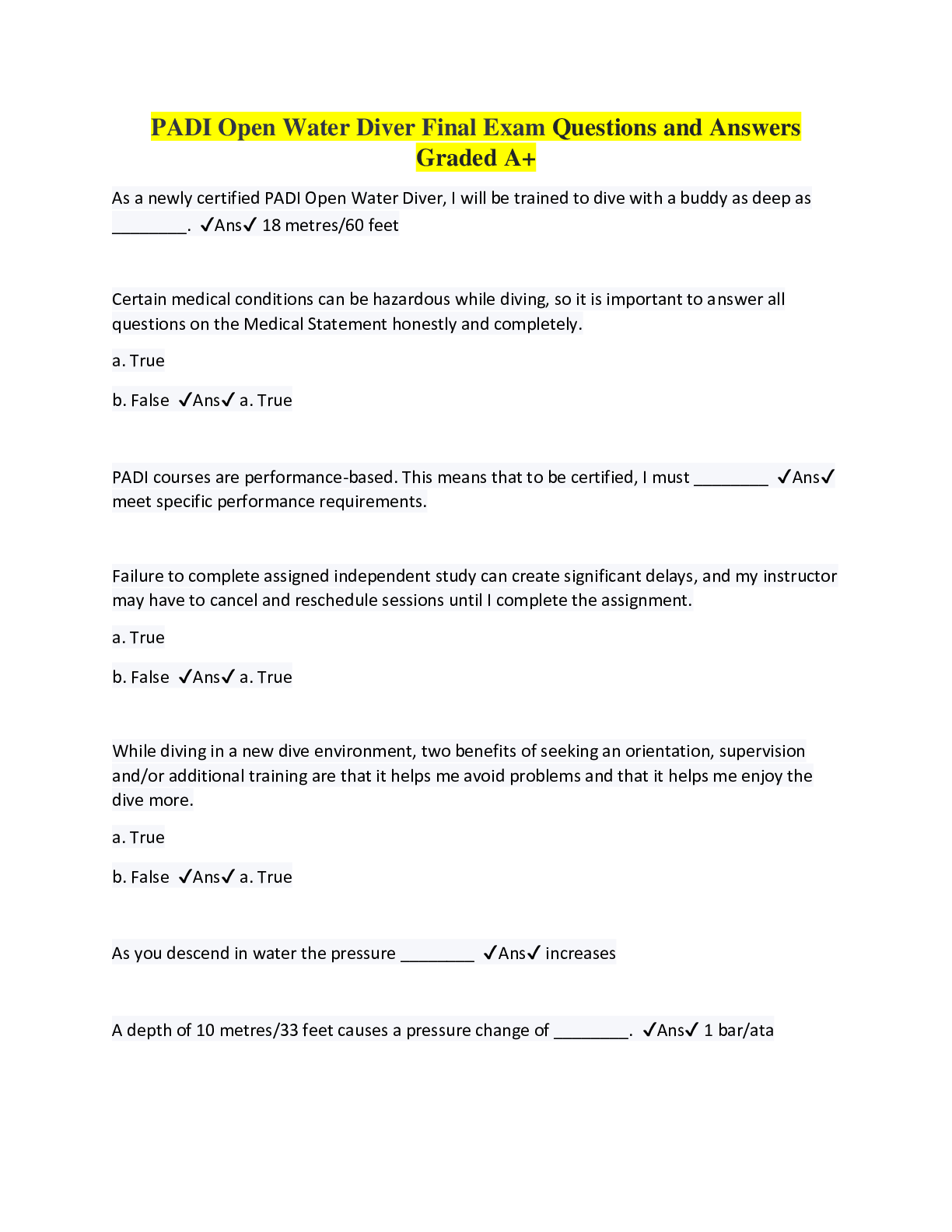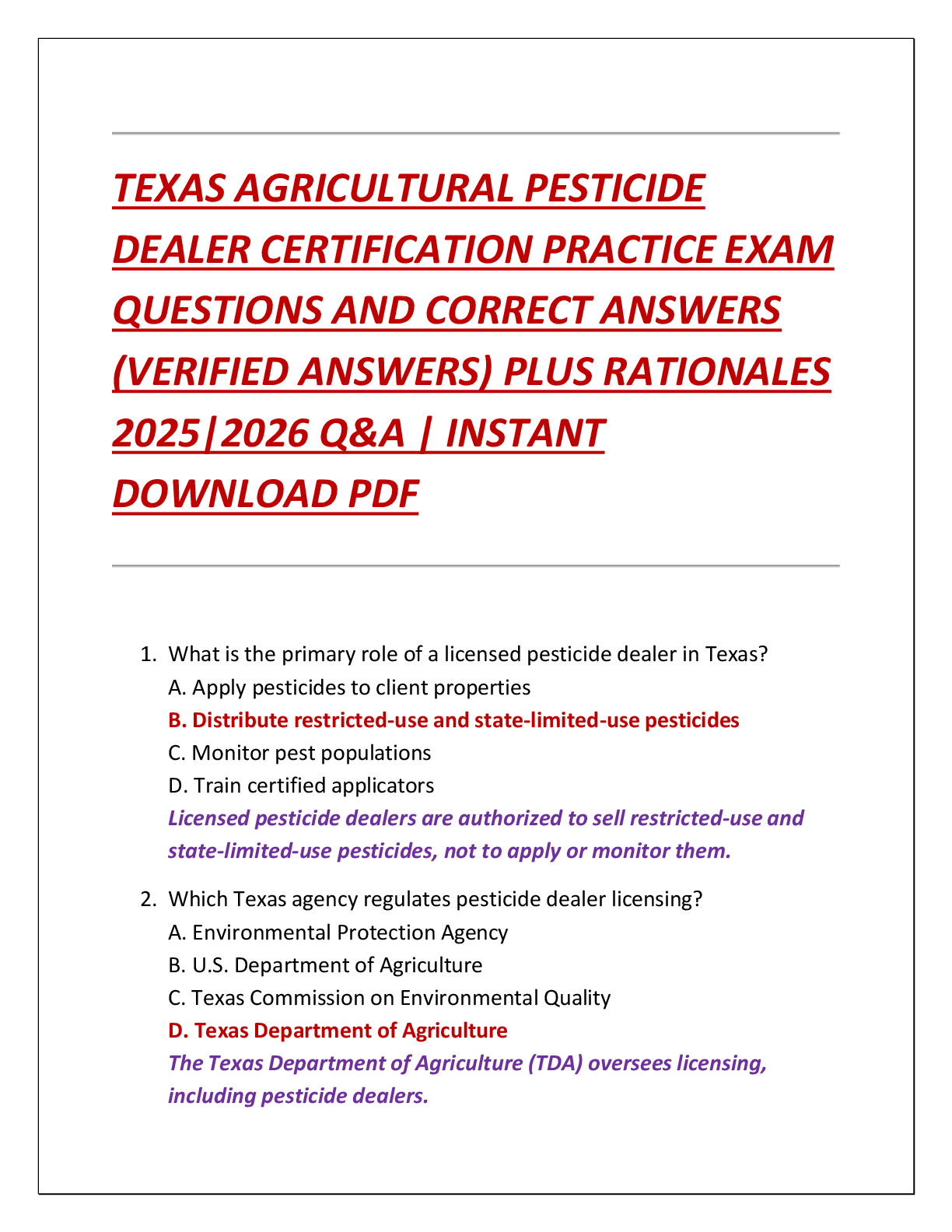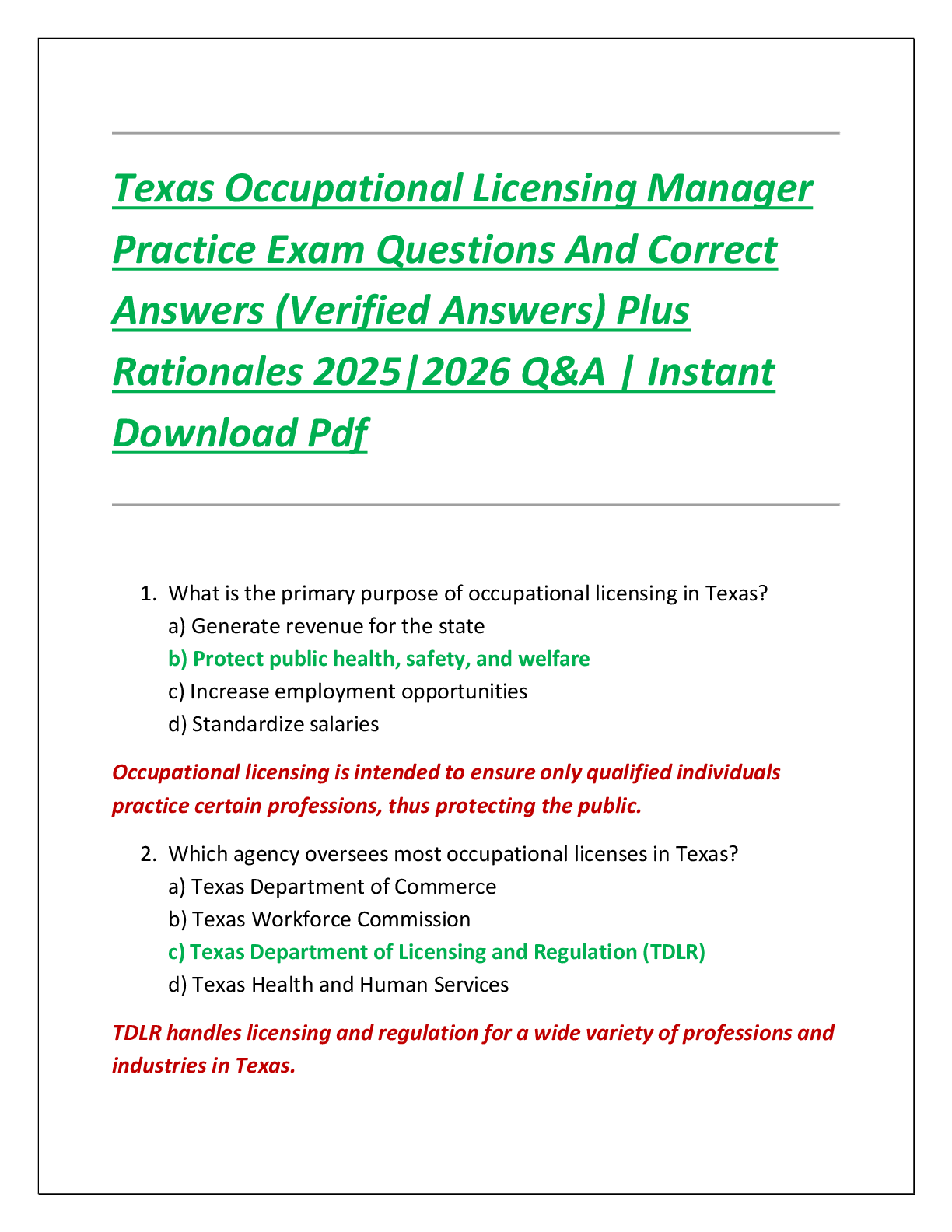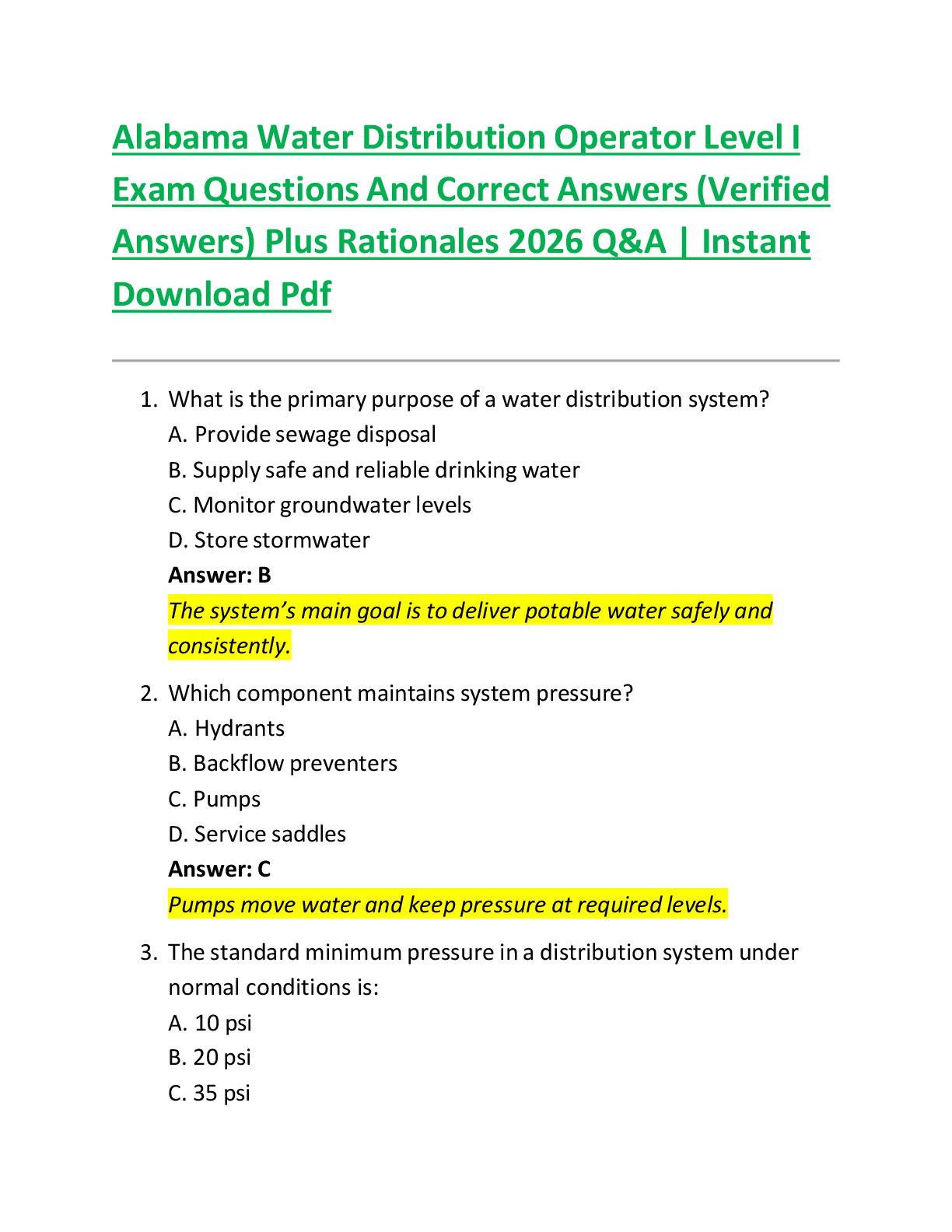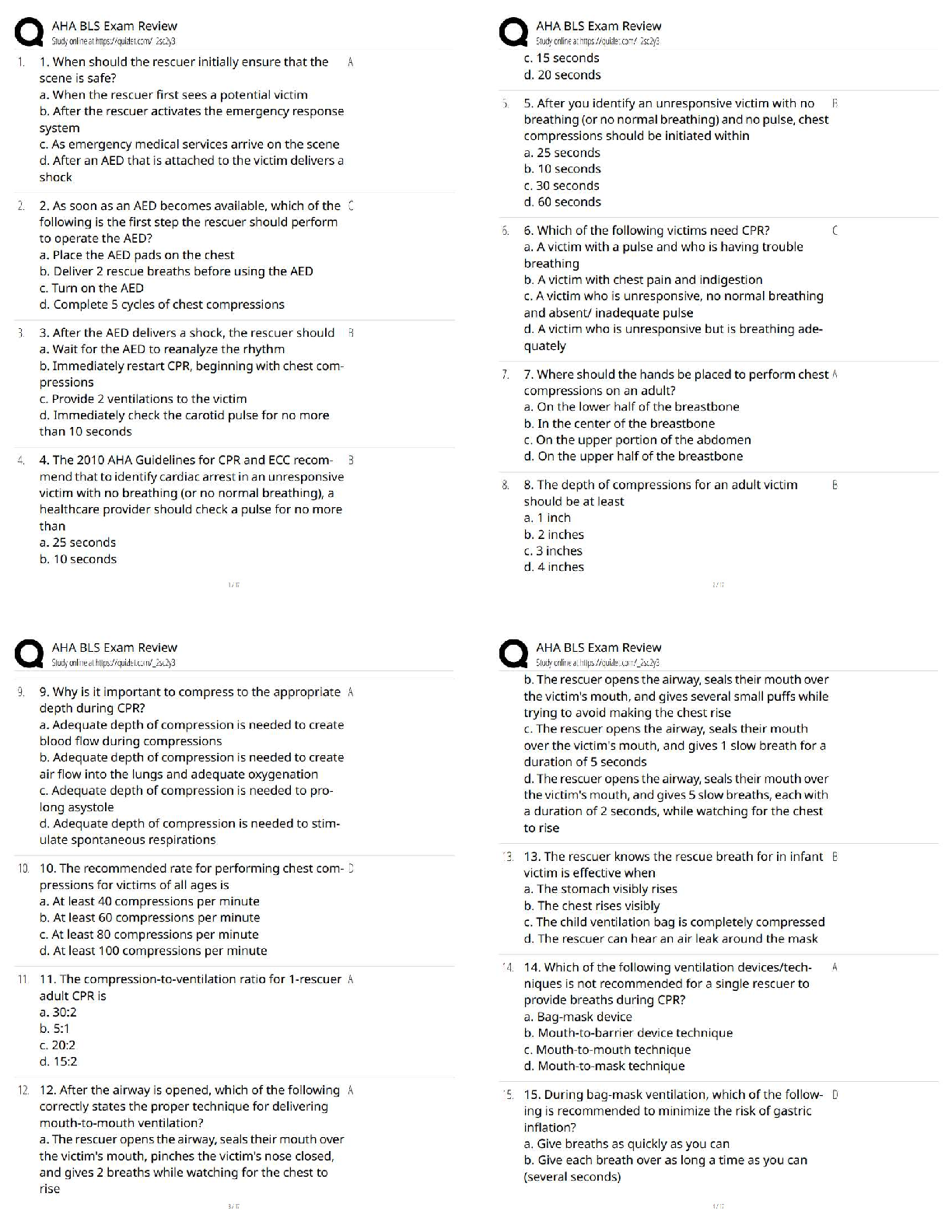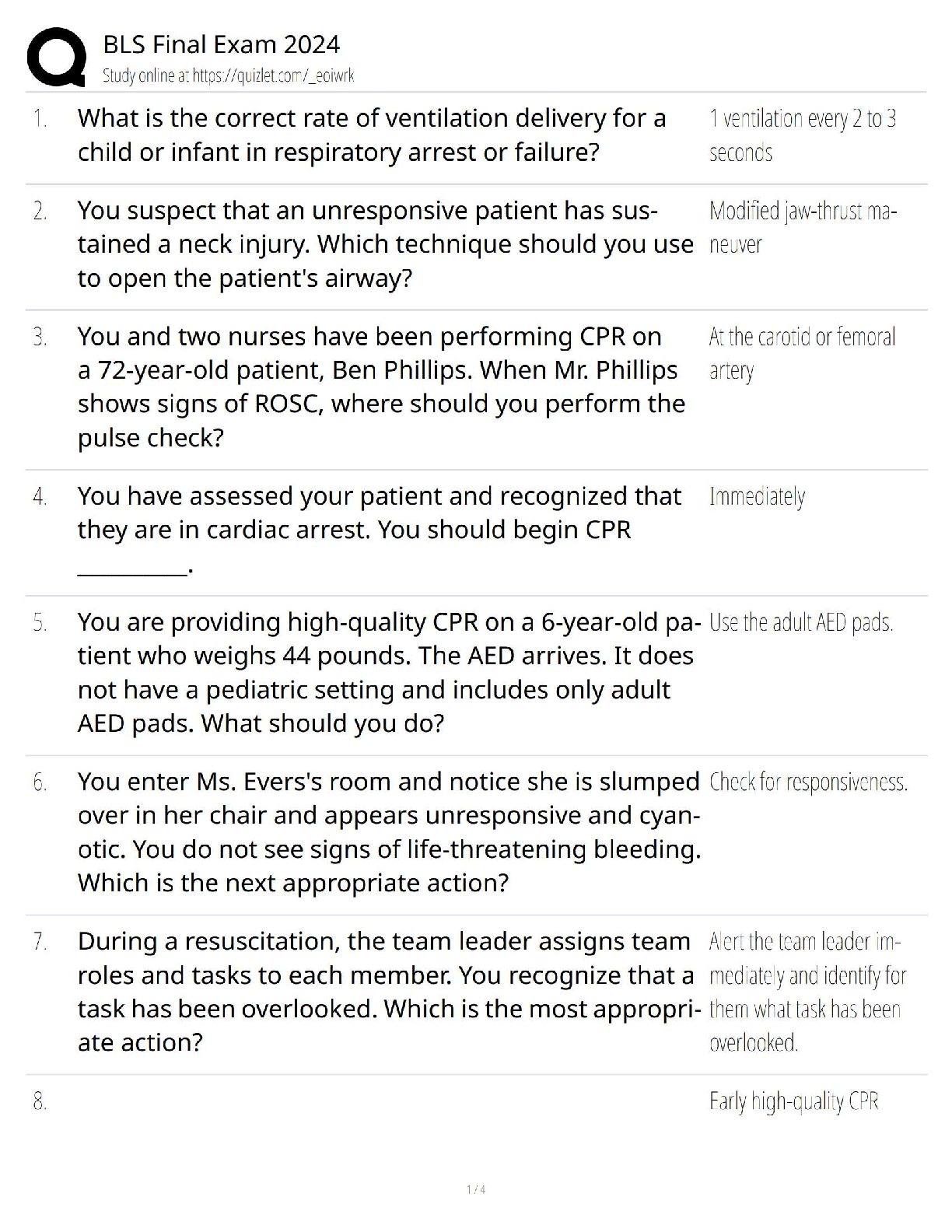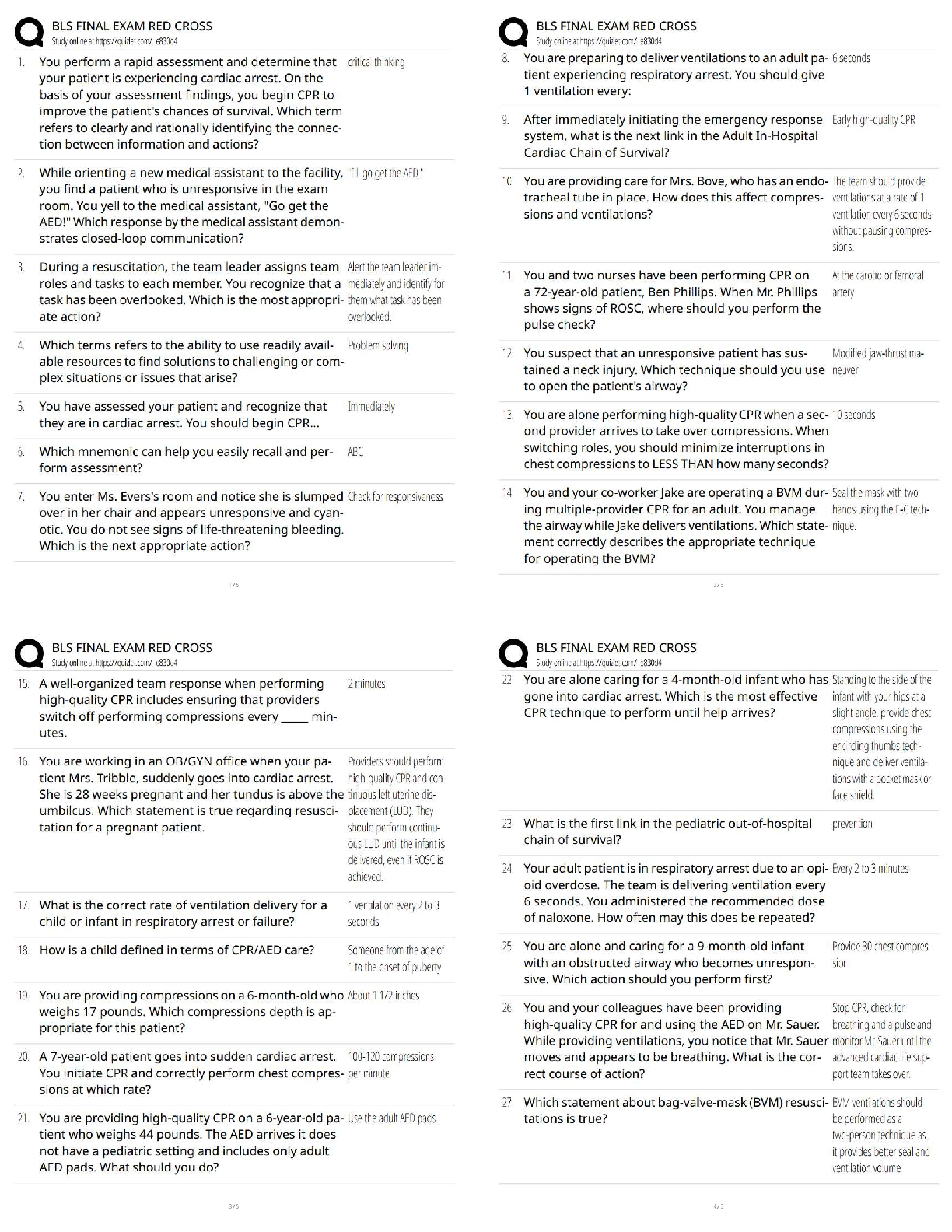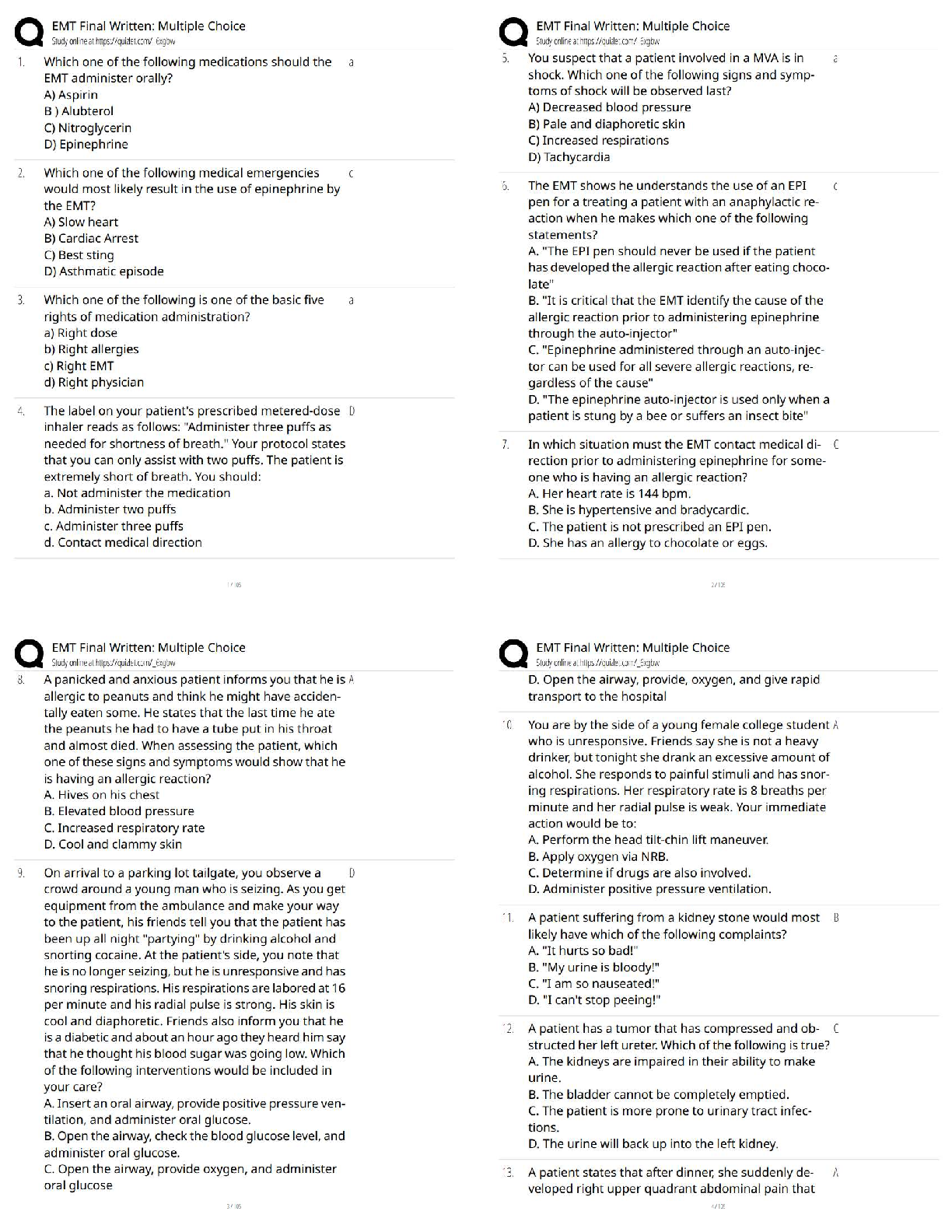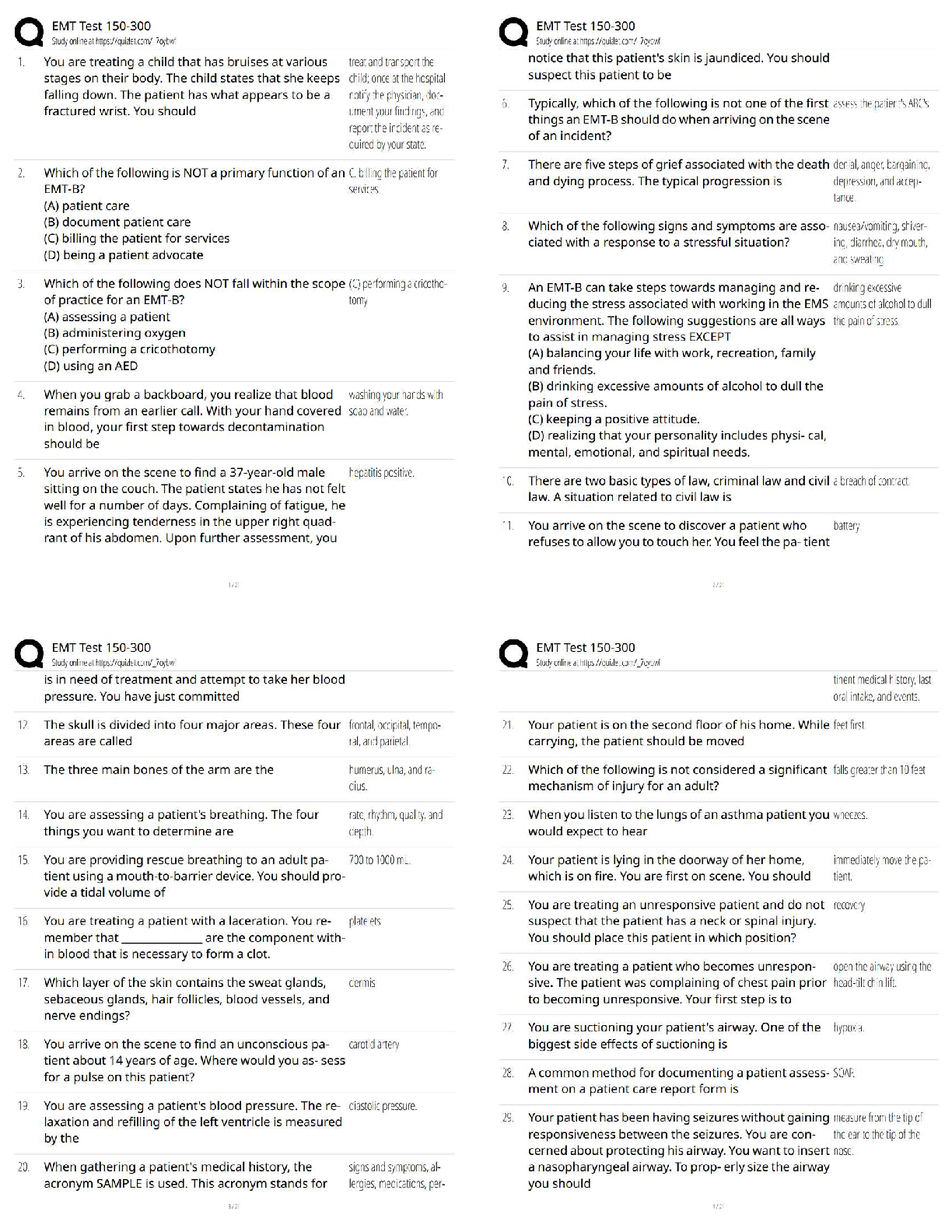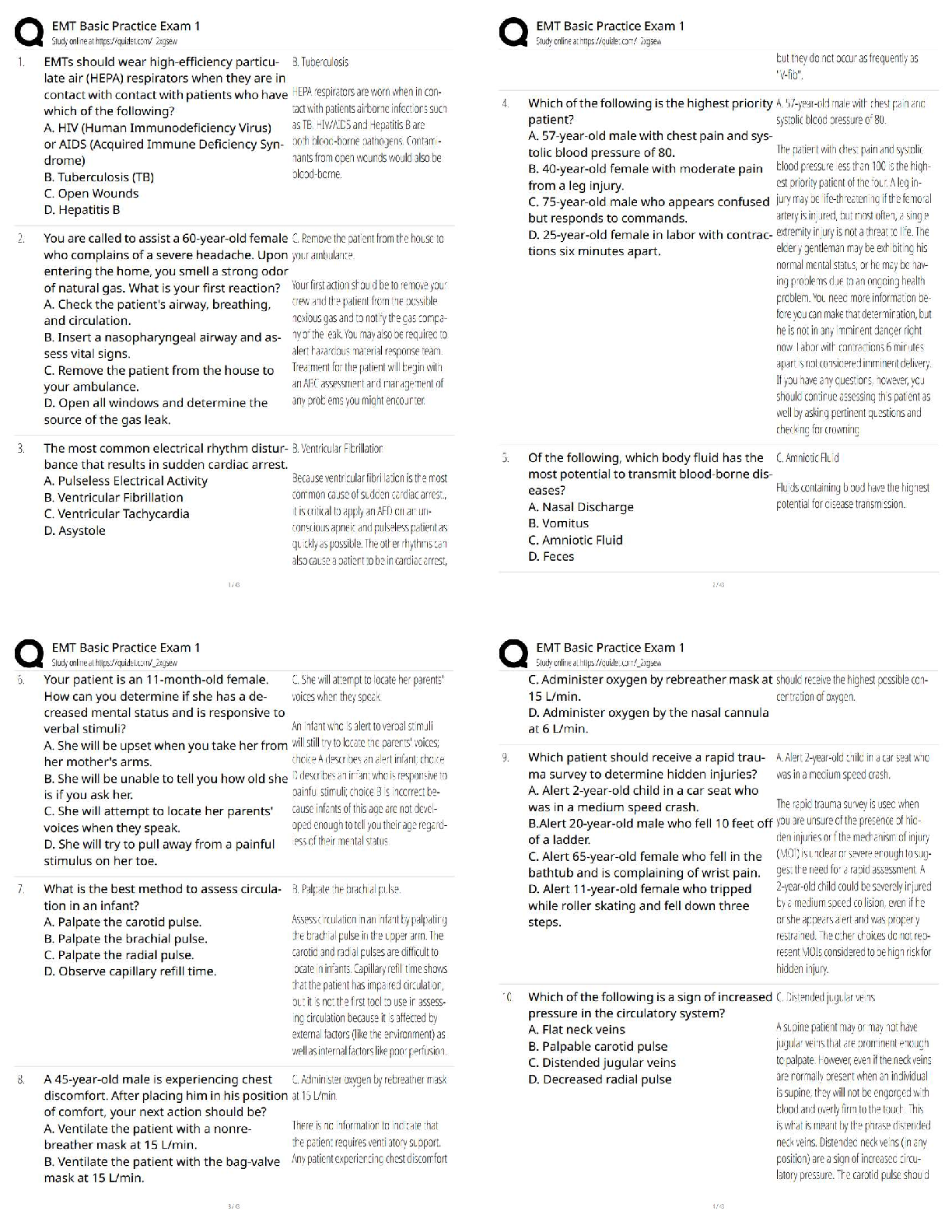Medicine > QUESTIONS & ANSWERS > CPHQ Exam Q 3. docx questions with correct answers 100% verified (All)
CPHQ Exam Q 3. docx questions with correct answers 100% verified
Document Content and Description Below
CPHQ Exam Q 3. docx questions with correct answers 100% verified Relaese without written authorization is regulated by national/state statutes & may include all of the following except: A. Patient ... s family member B. Governing body representative C. Senior leadership - CEO D. Healthcare personnel involved with this patients care at this time E. QI, risk management, & UM staff F. Health Info Management staff ✔✔ A What is the term used for information used for decision making? A. Data B. Information C. Decisions ✔✔ C What is the abstract representation of facts, concepts, & instructions? A. Data B. Information C. Decisions ✔✔ A What is data translated into results? A. Data B. Information C. Decisions ✔✔ B Would 1 day of pics be data or information? ✔✔ Data Would 5 days of pics be data or information? ✔✔ Information Which type of information system supports direct care processes such as lab/radiology results? A. Decision support systems B. Clinical information systems C. Administrative non clinical support systems ✔✔ B Which type of information system aids in day to day operations- billing, financial, human resources? A. Decision support systems B. Clinical information systems C. Administrative support systems ✔✔ C Which type of information system deals with strategic planning functions - cause & effect data?A. Decision support systems B. Clinical information systems C. Administrative support systems ✔✔ A In this decision support system charts are reviewed, medical records reviewed by analysts, severity & risk adjusted information identified: A. Chart based system B. Code based system C. Administrative system D. Clinical information system ✔✔ A In this decision support system information is taken from the medical record or coding medical record, based on retrospective administrative data, uses clinical information spanning entire stay, has lower cost & larger sample size, submission of payer data deemed public information required by the states: A. Chart based system B. Code based system C. Administrative system D. Clinical information system ✔✔ B Which type of data is measured? A. Categorical B. Continuous ✔✔ B What type of data is count? A. Categorical B. Continuous ✔✔ A Count, discrete, qualitative; considered attribute data with no quantitative value; binary data - 2 possibilities or values; example male or female: A. Ordinal categorical data B. Nominal categorical data C. Continuous data D. A& B ✔✔ B Nominal data put into categories & rank ordered - some sense of order; example agree, neutral, disagree: A. Ordinal categorical data B. Nominal categorical data C. Continuous data D. A & B ✔✔ A Measured on scales that theoretically have no gaps, considered variable data; values on a thermometer, height & weight: A. Ordinal categorical dataB. Nominal categorical data C. Continuous data D. A & B ✔✔ C Which is not an example of categorical data? A. How many people that had surgery B. Hypertension vs non hypertension C. Temp 105 & comes down to 101 D. Both A & B ✔✔ C Which is not an example of continuous data? A. Average daily census over 6 months B. Systolic & diastolic BPs C. Number of people that was admitted to surgery today D. Temp 105 dropping to 100 ✔✔ C Examines processes & results against a reference point either internally or externally with competitors & other organizations proving similar services: A. Comparison B. Differentiation C. Benchmarking ✔✔ A Examine processes & results that represent best practices for similar activities inside or outside the healthcare industry: A. Comparison B. Differentiation C. Benchmarking ✔✔ C Every element in the population has an equal or random chance of being selected: A. Nonprobability sampling B. Probability sampling ✔✔ B It's not possible to estimate the probability that every element has been included: A. Nonprobability sampling B. Probability sampling ✔✔ A After a random selection of first case, draw every nth case from population; every nth patient: A. Simple random sampling B. Systematic sampling C. Stratified random sampling D. Convenience sampling ✔✔ B [Show More]
Last updated: 2 years ago
Preview 1 out of 14 pages
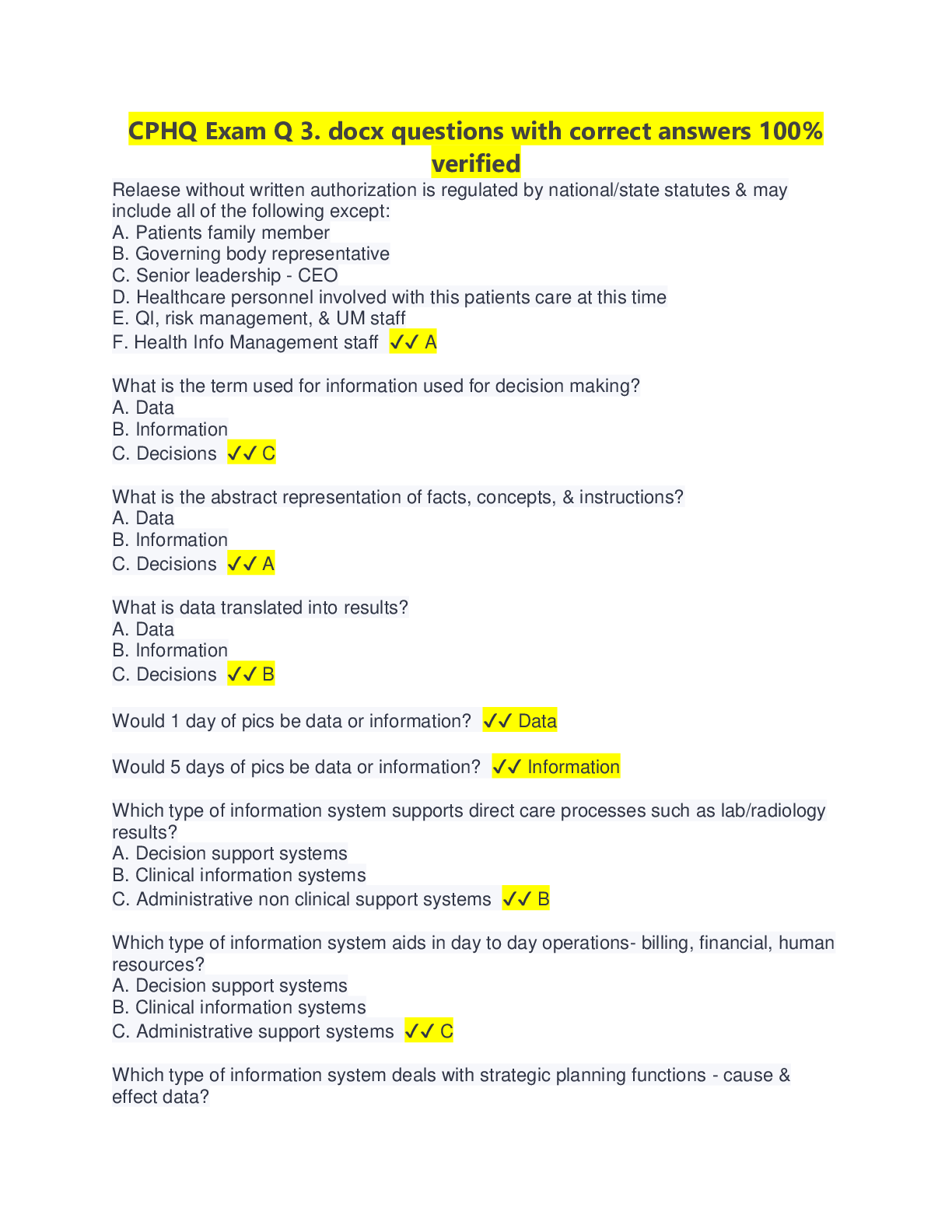
Buy this document to get the full access instantly
Instant Download Access after purchase
Buy NowInstant download
We Accept:

Also available in bundle (1)
Click Below to Access Bundle(s)

CPHQ EXAMS Bundled Together with complete solutions Questions and Answers (Verified Answers)(Full Solution Pack)
CPHQ Exam Study Guide.docx questions with correct answers 100% verified CPHQ Test Questions with Correct Answers 100% Verified CPHQ Exam Q 3. docx questions with correct answers 100% verified...
By Crescent 2 years ago
$15
8
Reviews( 0 )
$7.00
Can't find what you want? Try our AI powered Search
Document information
Connected school, study & course
About the document
Uploaded On
Jan 11, 2023
Number of pages
14
Written in
All
Additional information
This document has been written for:
Uploaded
Jan 11, 2023
Downloads
0
Views
143

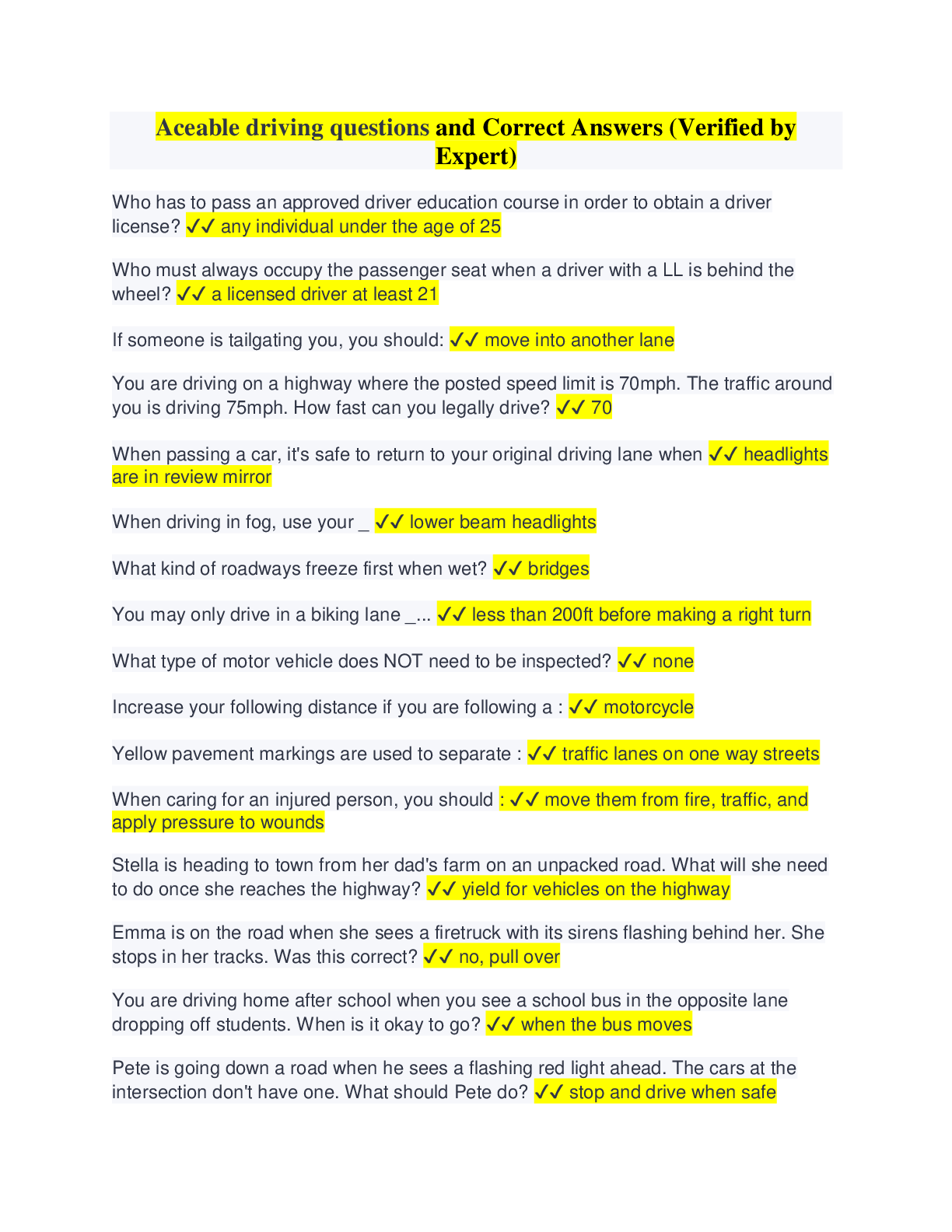

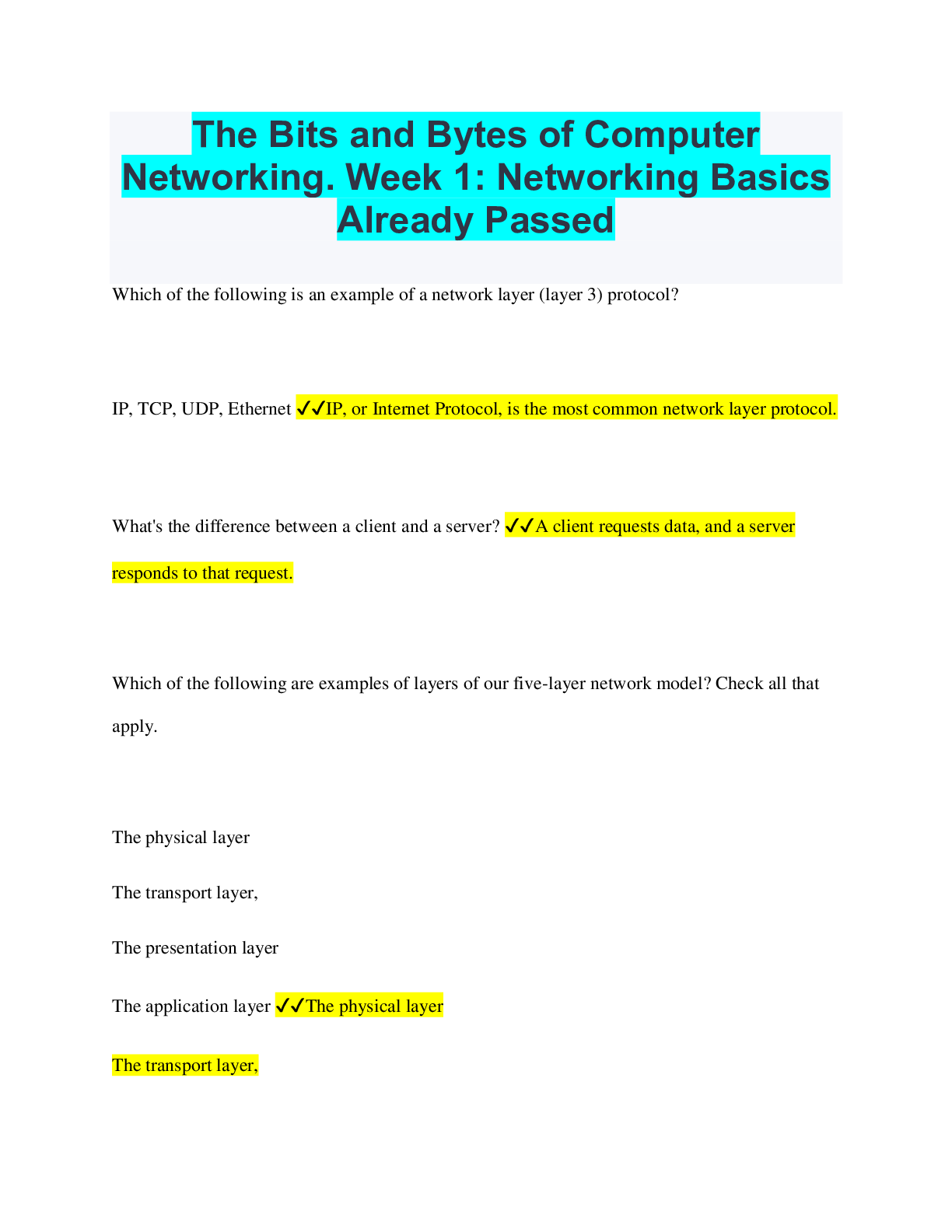
 Answered 2023.png)


